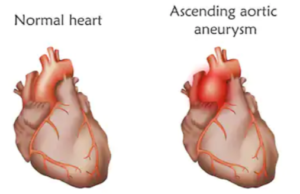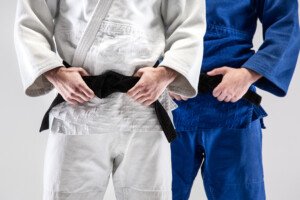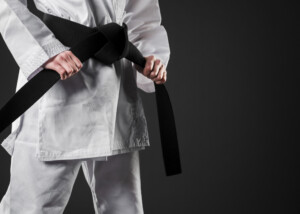A cardiothoracic surgeon explains guidelines that are specific to martial arts such as karate when one has a thoracic aortic aneurysm.
If you’ve been training in the martial arts for many years, but have then quite unexpectedly been diagnosed with a thoracic aortic aneurysm, you will need to alter the way you train.
If you’ve never trained in a martial art, though, your thoracic aortic aneurysm should not stop you from taking up this kind of discipline.
But, as with someone who’s already been in karate or taekwondo for many years, you’ll need to train in a way that strongly considers your TAA.
“This comes down to blood pressure control,” says Alexandra Kharazi, MD, a cardiothoracic surgeon with CVTS Medical Group, Inc., Chula Vista, CA.
“If someone has been doing martial arts for years, they are likely fit, and their body has adjusted to the intensity at which they practice.
“They may also be less likely to be struck in the chest with a higher level of experience.
“Whereas someone new to martial arts may have an increased likelihood of getting struck in the chest or getting hurt.
“Getting hurt, regardless of the mechanism, will trigger a sudden spike in blood pressure, which is a risk for rupture or dissection in someone with an aneurysm.
“I would recommend that both groups monitor for signs and symptoms of aortic aneurysm dissection or rupture: chest pain, dizziness, shortness of breath and less commonly, back pain.
“If someone were new to the sport, I would recommend avoiding high-impact activities if possible and a more gradual increase in activity.
“Notably, this also depends on the size of the aneurysm.
“I would be a lot more worried about someone with a known aneurysm of 6.0 cm practicing martial arts — even if they are experienced — than I would someone with a 4.5 cm aneurysm who is just starting out.”
Risks in the Martial Arts for an Aortic Dissection

Shutterstock/Veronika Zakharova
Dr. Kharazi says that getting struck in the chest can trigger an aortic dissection.
It’s not the blunt force of someone’s foot or fist (which is actually padded for tournament sparring matches and often in the dojo setting) that causes a tear in the interior wall of the already-dilated aorta.
It’s the quick spike in blood pressure that results. Therefore, a person with a TAA should always wear a chest protector when sparring or performing drills in which they might get kicked in the chest or slammed hard to the floor such as in grappling-style martial arts.
Some martial arts schools have their students conduct highly intense workouts which can make blood pressure get high and stay high such as a prolonged rotating sequence of 20 each of the following: jumping jacks, pushups, squat jumps, pushups, lunge jumps and then all over again with the jacks.
The practitioner with a TAA needs to be aware of engagement in high intensity interval-type drills.
If a martial artist with a thoracic aortic aneurysm had to avoid just one single activity of their sport, it should be tournament sparring.
• The nature of this can spike blood pressure, what with spurts of sudden fast movements and a rush of adrenalin.
• And of course, there’s the risk of getting slammed in the chest by an opponent who’s trying too hard to get that point.
• Tournament fighting is unpredictable.
If you have a zest for tournament competition, you may want to consider sticking to just forms, kata or patterns.
You certainly don’t need to give up martial arts just because you learned you have a bulge in your aorta, which is the body’s largest blood vessel.
In fact, it’s important that you keep training, since cardiovascular exercise is beneficial for heart health.
But now, you need to modify your training and be alert to anything that can cause a dramatic rise in blood pressure.
 Dr. Kharazi has many areas of surgical expertise including the following: aortic aneurysm repair, aortic valve repair and replacement, and CABG. Other areas of focus include arrhythmia, bloodless medicine, lung cancer and resection, septal defect repair and thoracic surgery.
Dr. Kharazi has many areas of surgical expertise including the following: aortic aneurysm repair, aortic valve repair and replacement, and CABG. Other areas of focus include arrhythmia, bloodless medicine, lung cancer and resection, septal defect repair and thoracic surgery.
 Lorra Garrick has been covering medical, fitness and cybersecurity topics for many years, having written thousands of articles for print magazines and websites, including as a ghostwriter. She’s also a former ACE-certified personal trainer.
Lorra Garrick has been covering medical, fitness and cybersecurity topics for many years, having written thousands of articles for print magazines and websites, including as a ghostwriter. She’s also a former ACE-certified personal trainer.
.



























